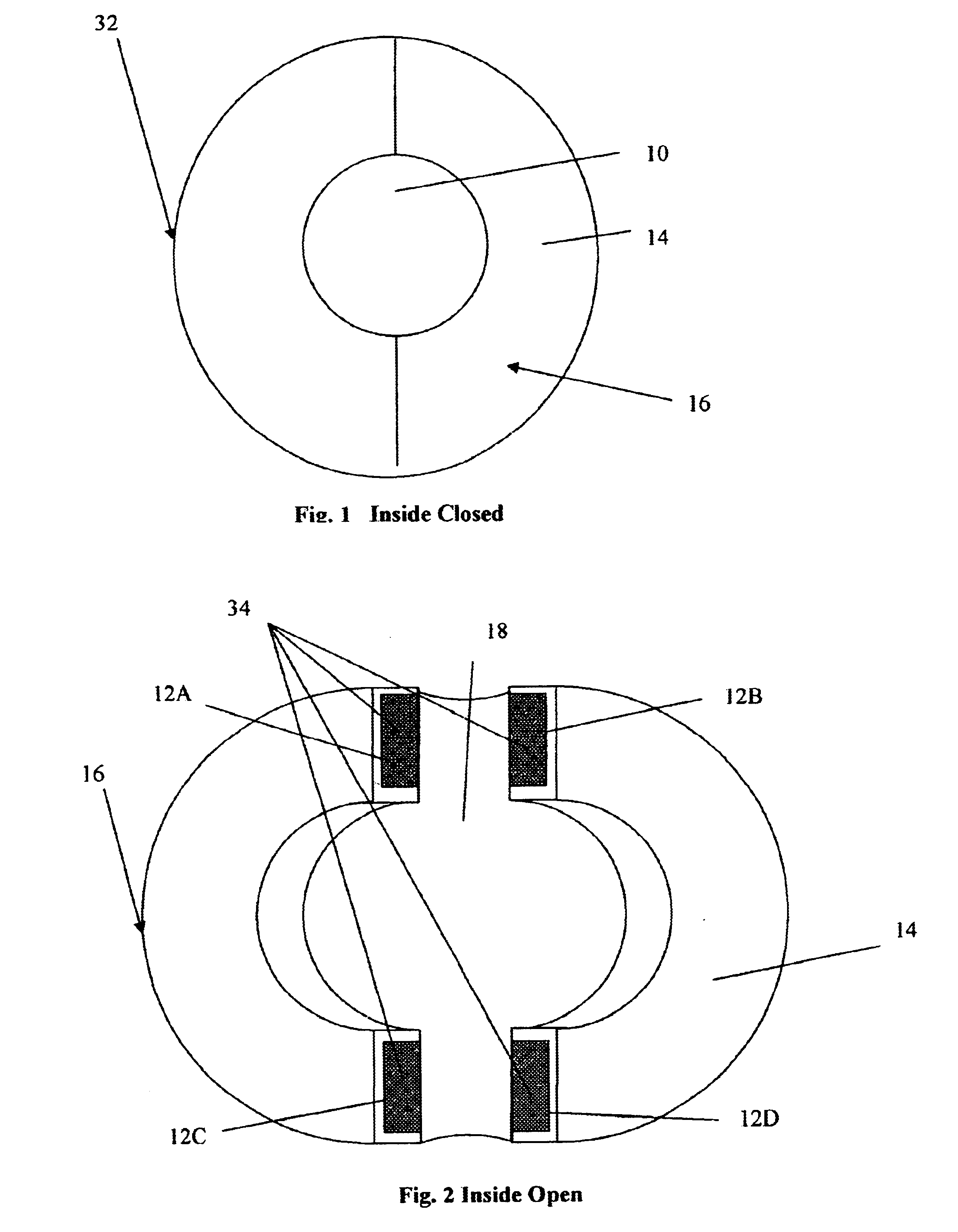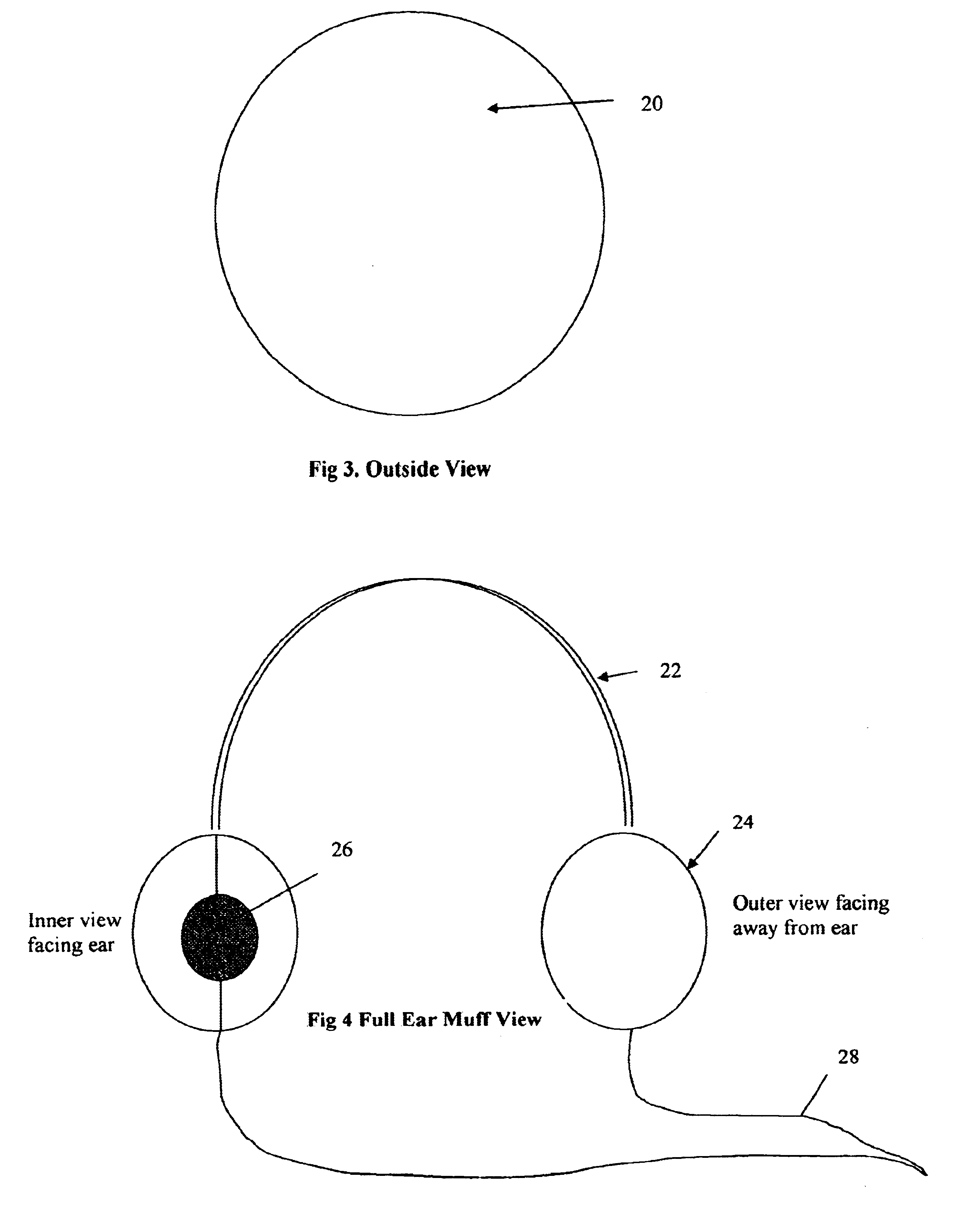Headphone earmuffs
a headphone and earpiece technology, applied in the field of ear muffs, can solve the problems of difficult use of both in unison, large size, weight, and more expensive to be practically adapted for outdoor use, and speakers that do not lend themselves to protecting the ear, so as to reduce the random repositioning of speakers during us
- Summary
- Abstract
- Description
- Claims
- Application Information
AI Technical Summary
Benefits of technology
Problems solved by technology
Method used
Image
Examples
Embodiment Construction
FIG. 1 shows a perspective view of the headphone earmuff. The inner structure is constructed out of foam material or the like of a thickness that is rigid enough to hold the shape of a round disk cut in half and bored out in the center so that the structure is that of a donut cut in half. The two halves of the foam donut are then fastened together with hook and loop type fastener. A speaker space 10 in the middle is created when the two-donut halves 16 are fastened together. This speaker space 10 is occupied with a headphone speaker 26 where a band 22 follows between planar sides 12a and 12b at the top of the connecting donut. Planar sides 12c and 12d at the bottom of the split donut reconnect around the headphone speaker 26 and speaker wire 28 allowing it to exit the earmuff.
An outer covering of the foam donut, comprised of the connecting C shape halves 16, is covered with fabric on its outer surface 20 said fabric enclosing each donut half 16, whether in open position or closed. B...
PUM
 Login to View More
Login to View More Abstract
Description
Claims
Application Information
 Login to View More
Login to View More - R&D
- Intellectual Property
- Life Sciences
- Materials
- Tech Scout
- Unparalleled Data Quality
- Higher Quality Content
- 60% Fewer Hallucinations
Browse by: Latest US Patents, China's latest patents, Technical Efficacy Thesaurus, Application Domain, Technology Topic, Popular Technical Reports.
© 2025 PatSnap. All rights reserved.Legal|Privacy policy|Modern Slavery Act Transparency Statement|Sitemap|About US| Contact US: help@patsnap.com



